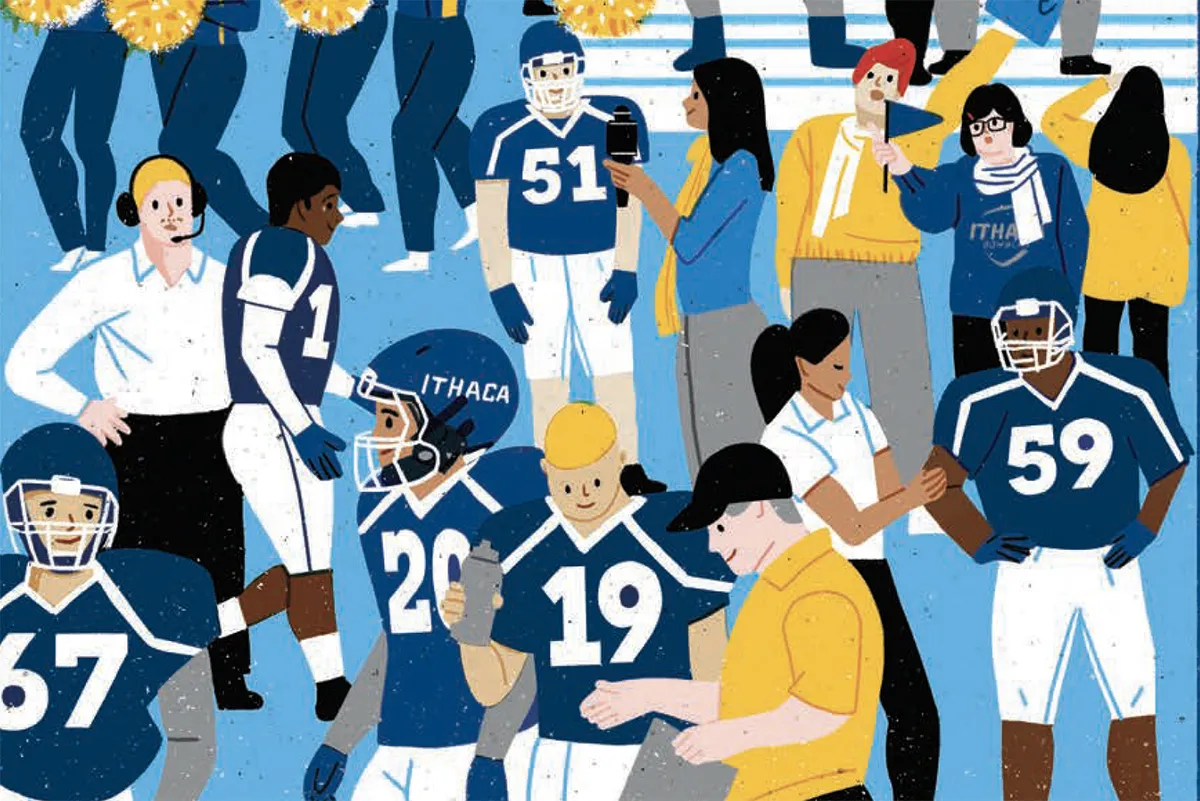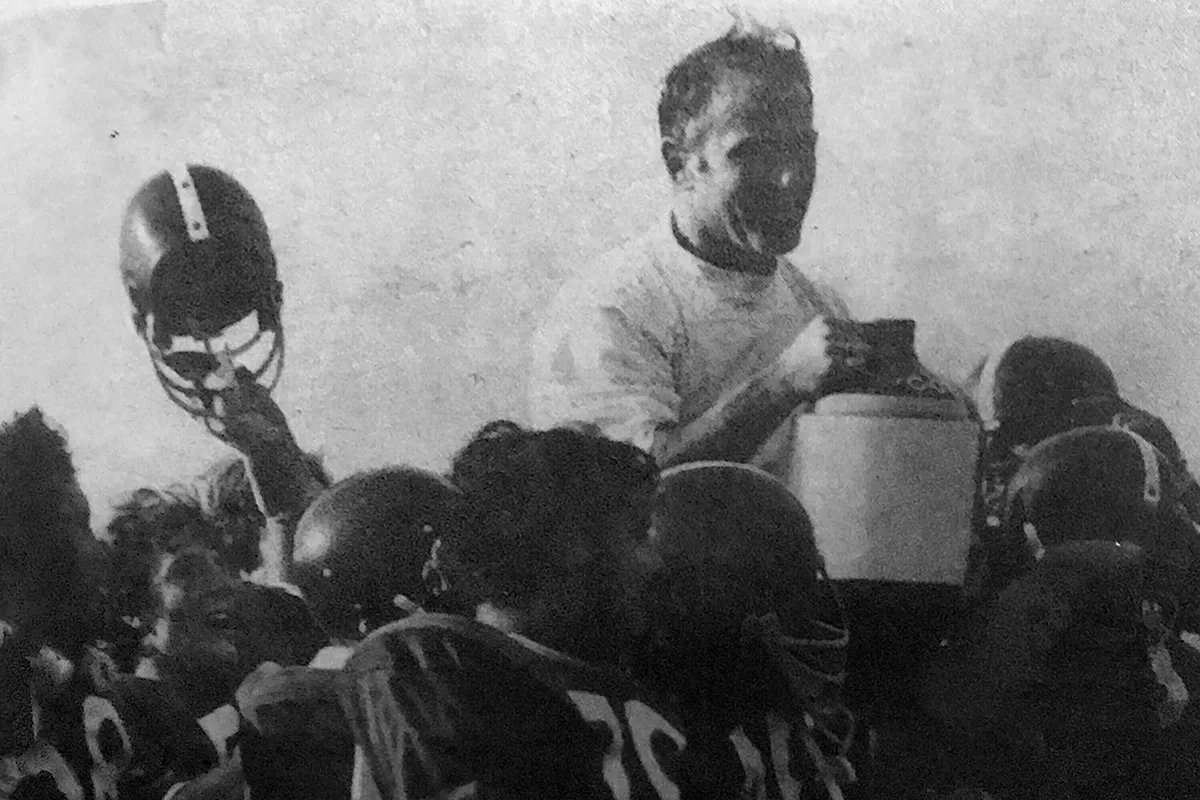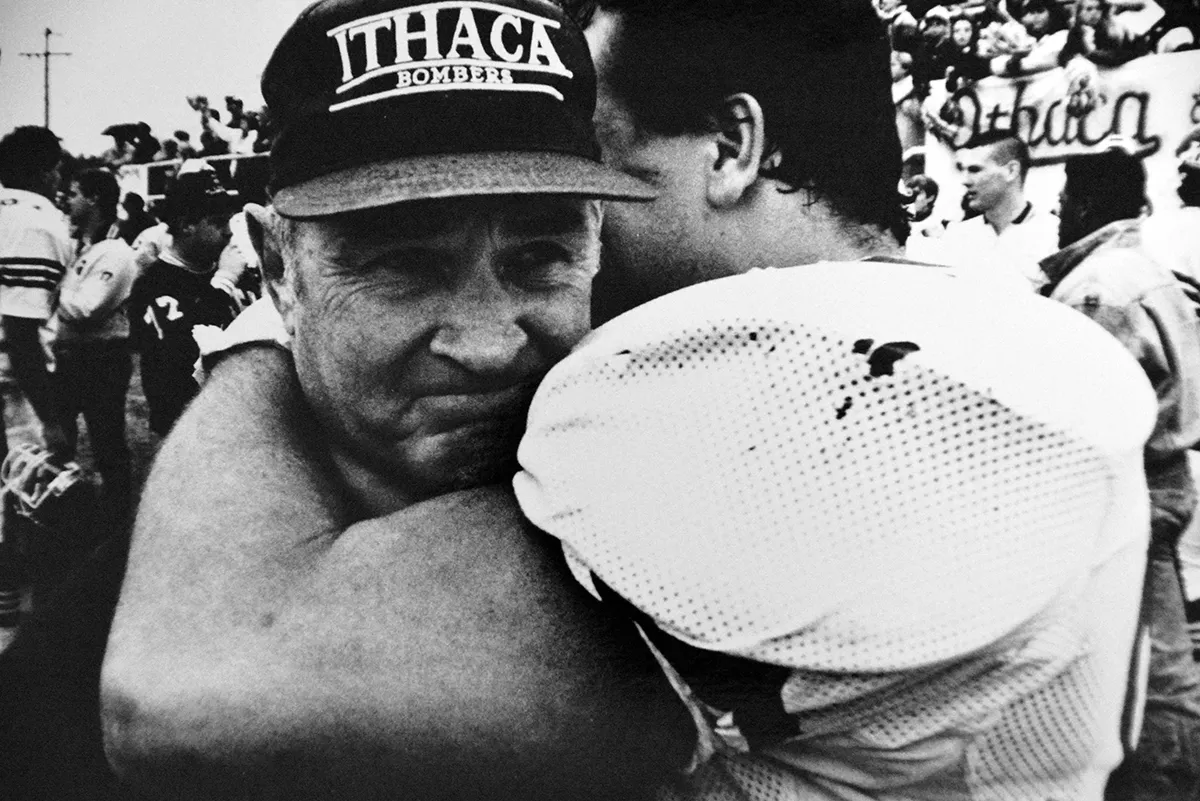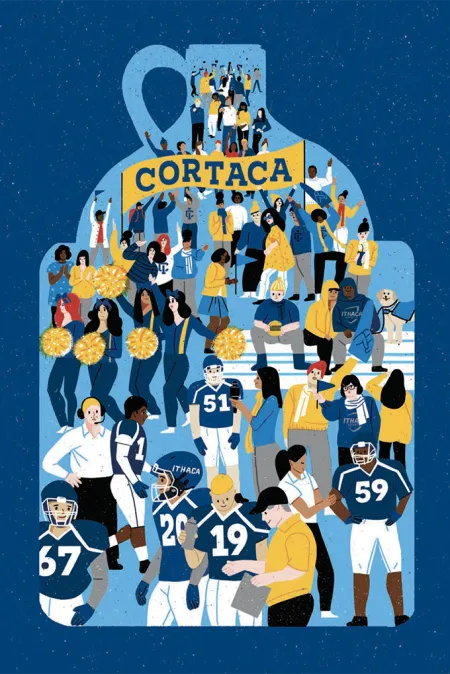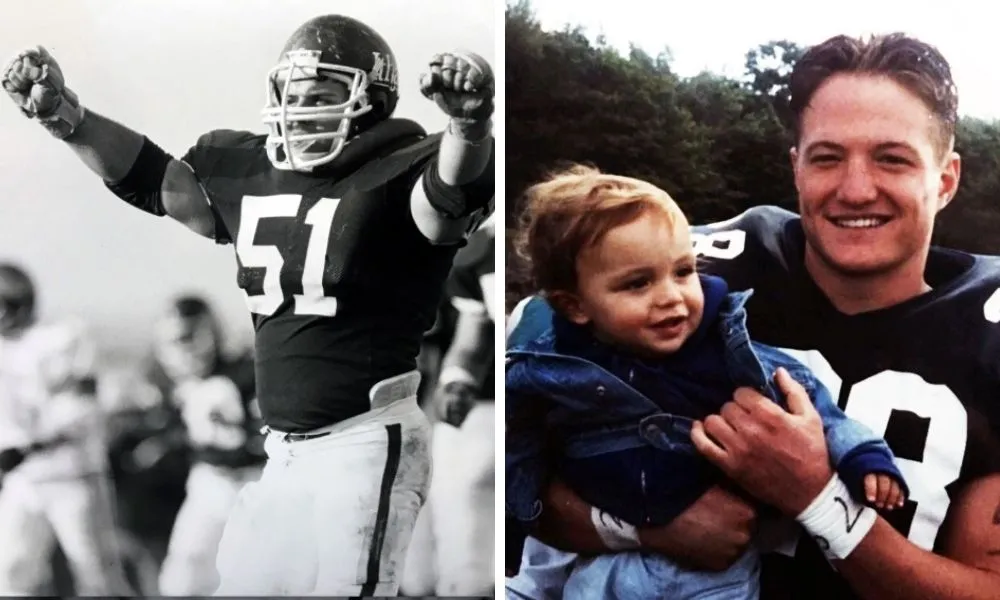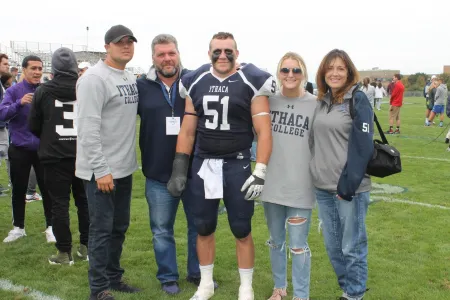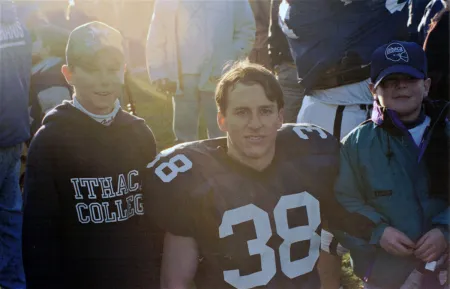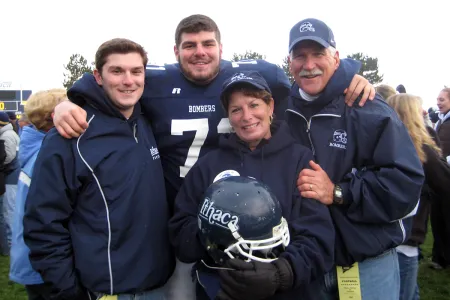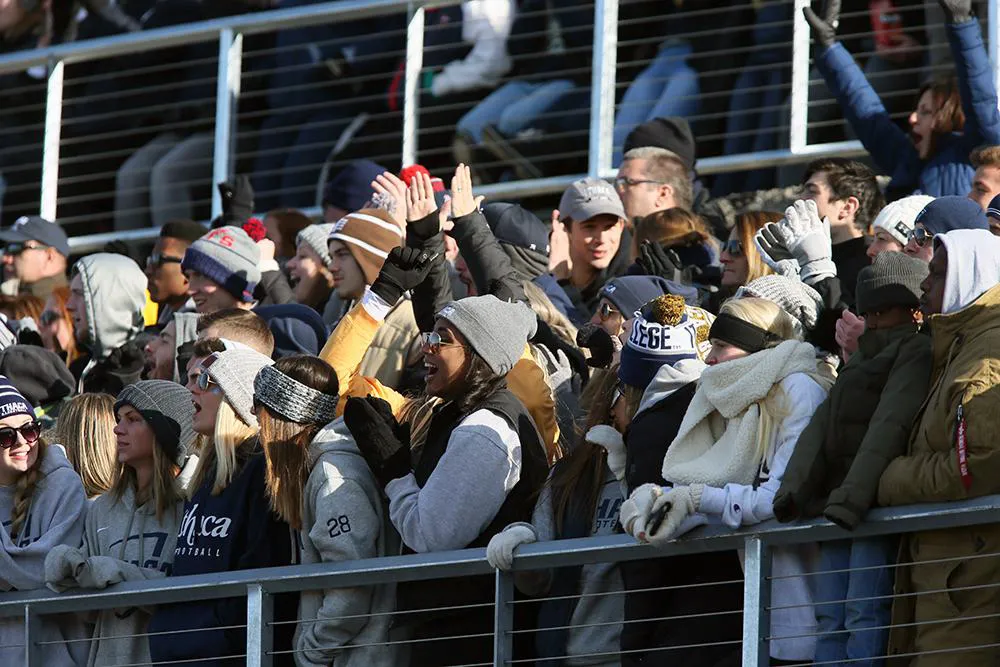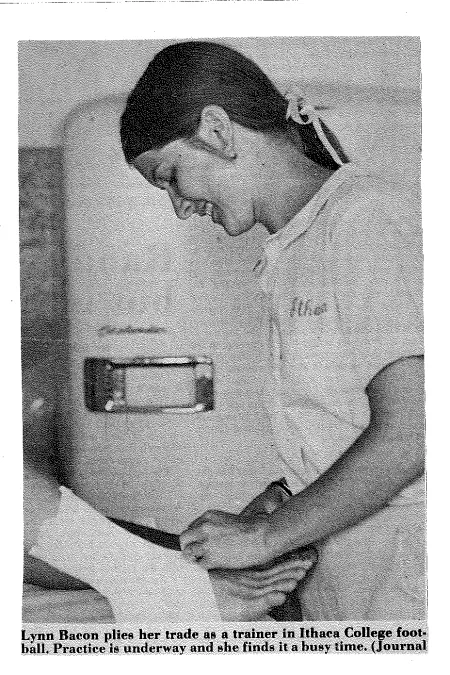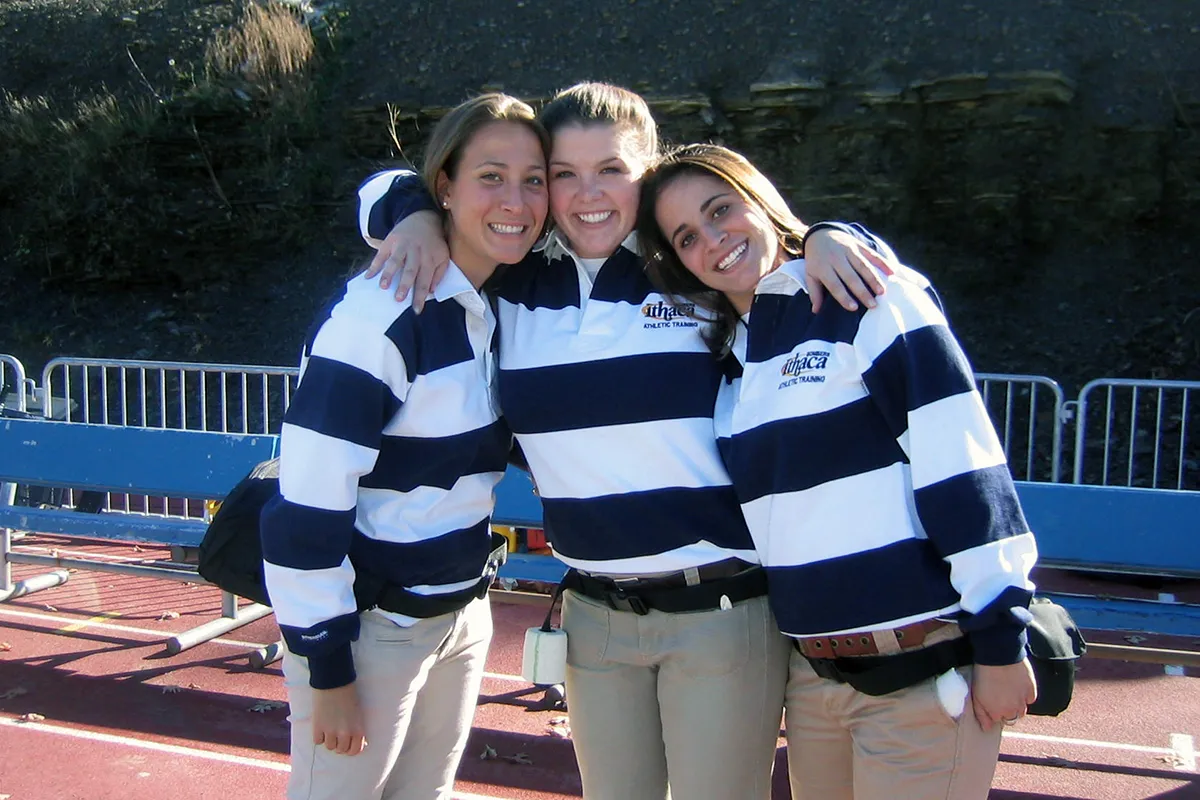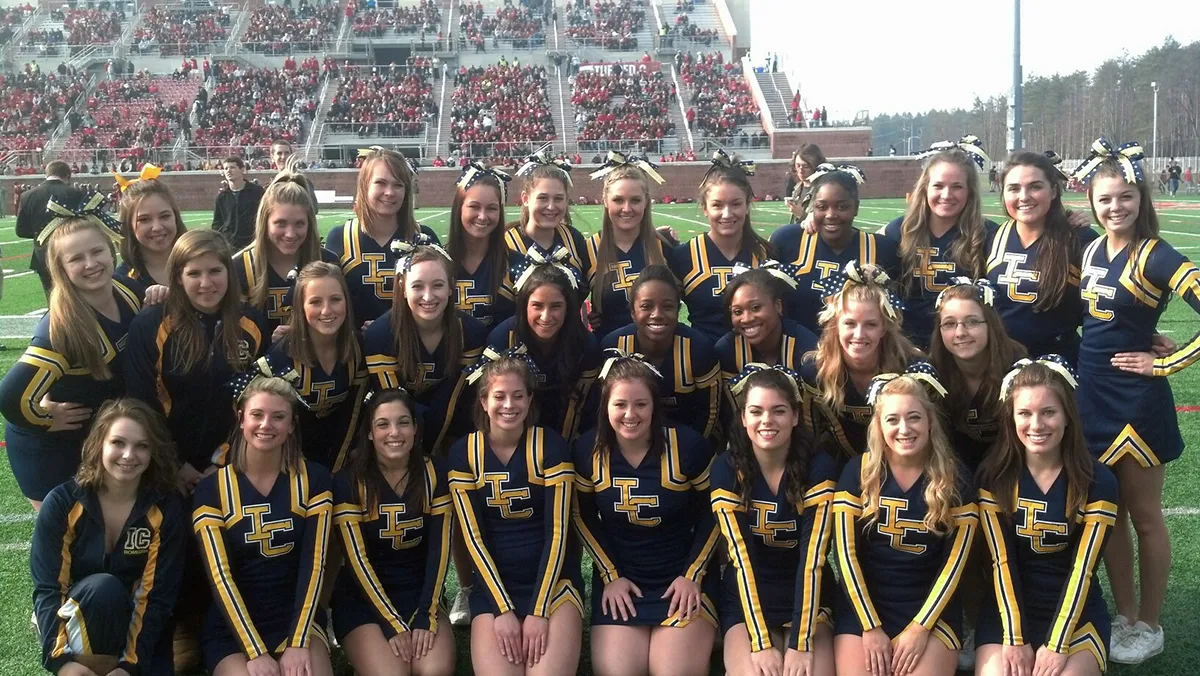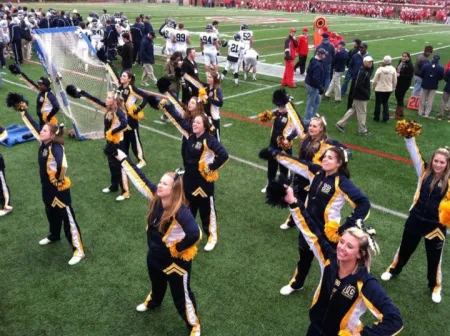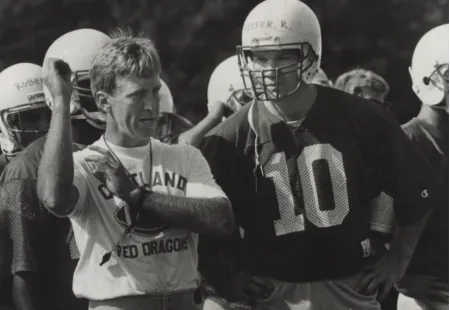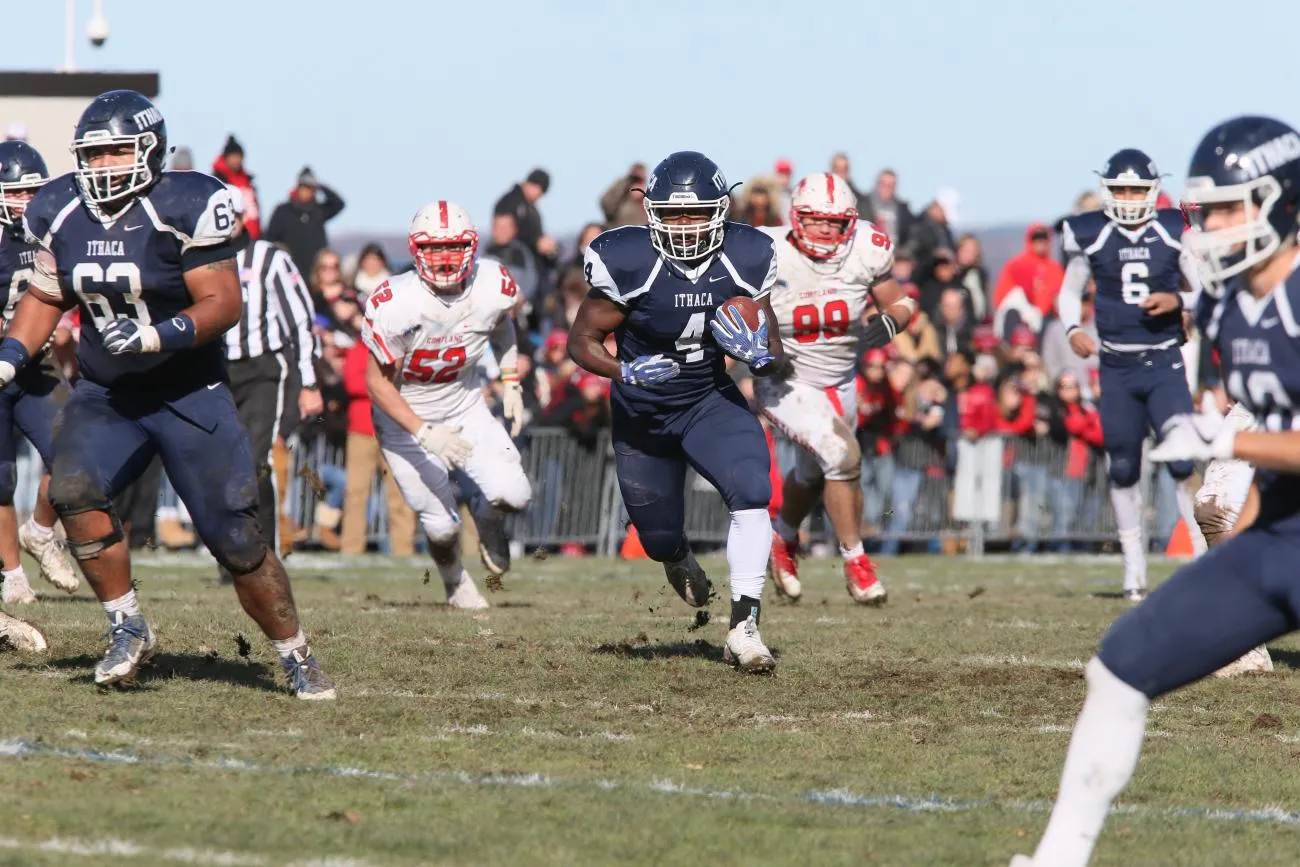By Patrick Bohn '05 and Kerry C. Regan
IF YOU’VE CHOSEN to read this article, there’s a good chance you already know something about the Cortaca Jug. You know it’s the nickname given to Ithaca’s annual football game against the State University of New York (SUNY) College at Cortland. You might even have heard the origin story of the jug itself — how in 1959 Ithaca captain Dick Carmean ’60 and Cortland captain Tom Decker talked about creating a trophy prior to that year’s game, and Decker subsequently picked up a stoneware jug at a yard sale in Homer, New York.
This year, both the jug and the game are moving from their upstate New York home to a much bigger venue — MetLife Stadium in East Rutherford, New Jersey — after the National Football Foundation invited the schools to play there in celebration of the 150th anniversary of college football. It’s there that the rivalry will take on a collaborative twist: the Bombers and Red Dragons will attempt to break the all-time Division III single-game attendance record of 37,355. But this story isn’t about the upcoming game or attendance records. This story is about the Cortaca you might not know about — the one that also takes place on the sidelines, in the athletic training and locker rooms, and spills over to the campuses and the towns. It’s a story of strong family ties, shifting family allegiances, and the family-like connections that grow with a team and in a community when a game is more than just a game.
